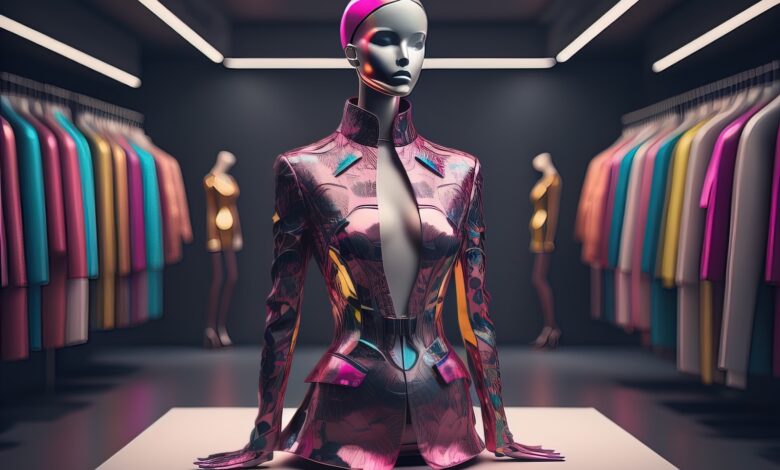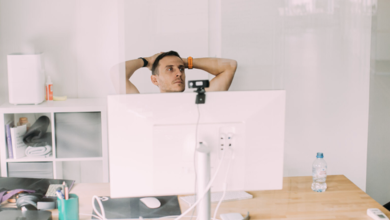
The fashion industry is at the forefront of a revolution as artificial intelligence (AI) begins to reshape the ways it works, transforming its very core. Recent breakthroughs in AI technology have made it possible to generate fashion models that are virtually identical to their human counterparts, opening up a world of infinite possibilities – and challenges – for brands, creatives, and consumers alike.
From ethical concerns to the potential impact on jobs within the industry, all key players must critically examine whether these new AI-driven features truly benefit the parties involved. The real question is: are they all welcome?
Fashion brands succumb to the unlimited potential of AI
In November 2024, Spanish-born fashion brand Mango made headlines by introducing an AI-generated campaign for its teen sportswear line. The campaign featured AI models in various environments like dance studios and outdoor settings. What set this campaign apart was the remarkable quality of the AI-generated imagery – the models were virtually indistinguishable from real human models.
More recently, another well-known brand to fashionistas made the news. H&M, one of the world’s largest clothing retailers, announced plans to create digital twins of 30 real-life models for use in its marketing and social media content, while indicating images would be watermarked for transparency.
Both announcements by worldwide leading brands didn’t go unnoticed as their use of digital innovations are opening doors to faster content creation, substantial cost savings, unprecedented creative flexibility, and the ability to personalize at scale – all previously constrained by traditional photoshoots’ limitations.
Balancing innovation with ethical challenges
Despite the exciting possibilities, the rise of AI models in fashion also comes with a series of important considerations and obstacles to overcome. The widespread adoption of AI models could potentially impact the lives of thousands of professionals in the fashion industry worldwide, including photographers, makeup artists, and stylists, whose careers are already precarious and whose rights are often poorly protected.
As Sara Ziff, founder of the Model Alliance, a nonprofit research, policy, and advocacy organization dedicated to advancing labor rights in the fashion industry, noted, “This situation raises significant questions about consent, payment, and the potential replacement of numerous fashion professionals”. Although H&M has stated that models will retain rights over their digital twins, complex issues remain surrounding AI-generated models’ ownership and usage rights, and there is every reason to believe that other brands may not share the Swedish group’s concerns.
Authenticity wanted
Whatever the degree of collaboration with human models and creative talent, the fashion industry must recognize the risk associated with using AI-generated capabilities in its creative process.
While AI models offer the potential for greater flexibility and diversity in fashion imagery, consumers will ultimately decide whether they find them appealing. Although diversity is sometimes controversial, the value of representativeness and role modeling is real and can impact consumer decision-making. In other words, we expect fashion, like other image-based industries, to become more capable of portraying the diversity of its customers.
The bright side of AI-powered fashion technologies
The recent leap in AI capabilities hasn’t gone unnoticed by other players in the fashion industry – from product development to supply chain optimization and customer service, the possibilities are endless to boost innovation and better align business strategies with market demands.
As fashion brands launch global campaigns trying to be relevant to local markets or specific demographics, the use of AI-generated models may offer tangible creative and operational benefits. AI makes instant global localization possible, by adapting the same campaign visuals with models reflecting different markets and consumer groups. In the spirit of becoming more efficient, AI also enables creative teams to test different styling, poses, or settings without having to organize new photo shoots.
Diversity isn’t left out of this evolution and AI could ensure consistent diversity at scale. With AI-generated models, there’s no limit to showcasing different body types, skin tones or age groups, while maintaining visual consistency throughout a campaign.
Attention to the representation of various groups in marketing campaigns can also result in a more personalized online shopping experience as fashion brands start to use AI to boost existing technologies. Virtual Try-On technologies are a good example as they provide consumers with immersive features. While being able to visualize how garments would look when worn, thanks to AI-generated personalized imagery, consumers make more informed purchase decisions and are less likely to return items.
A level of flexibility which brings a number of benefits: greater customer satisfaction, higher conversion rates and lower returns, all of which contribute to improved brand loyalty and inventory management.
What comes next
As the fashion industry grapples with these opportunities and challenges, several key developments will likely shape the future of AI in fashion. As AI-generated content becomes more prevalent, some traditional roles will likely be impacted, and there will likely be increased pressure on brands.
However, if we can expect – and wish for – the development of new regulations and industry standards governing the use of AI-generated content, the industry is in for some very thrilling times. The critical factor will be finding the right balance between harnessing the benefits of this powerful ally and maintaining a genuine connection with human creativity and authenticity.





